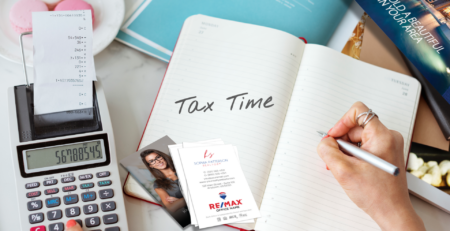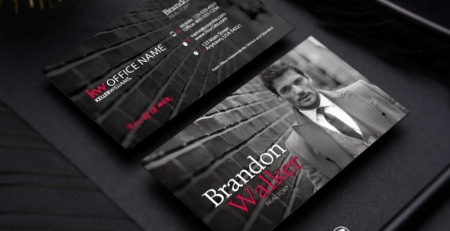Marketing Plan 2025
As we step into 2025, the real estate market continues to shift, with new technology, changing buyer behaviors, and an increasingly competitive environment. To stay ahead, real estate agents must develop a marketing plan that adapts to these changes while still focusing on the fundamentals that build trust and drive business. Whether you’re a seasoned professional or just starting, a well-rounded marketing strategy is essential to success. In this blog, we’ll break down how to create a real estate marketing plan for 2025 that delivers results—and how you can incorporate powerful tools like custom business cards and postcards to enhance your outreach.
How to Create a Real Estate Marketing Plan That Works in 2025
1. Know Your Target Audience
Understanding your target audience is the foundation of any effective marketing strategy. In 2025, real estate buyers are more informed than ever before. With the availability of online tools, buyers are doing extensive research before even reaching out to an agent. This means your marketing needs to address their specific needs, pain points, and desires.
Whether you are targeting millennials, empty nesters, or first-time homebuyers, each group has unique expectations that will influence the kind of messaging and services you should offer. For example, millennials might be more inclined toward eco-friendly homes, while retirees may prioritize accessibility features.
To succeed, you need to develop buyer personas that detail the characteristics, behaviors, and motivations of your ideal clients. These personas will guide your content creation, allowing you to tailor your social media posts, website copy, and email campaigns to speak directly to the buyer’s needs.
Understanding your audience will also help you identify which platforms to use for engagement—whether that’s Facebook for older generations, Instagram for millennials, or LinkedIn for professionals. Additionally, in-person interactions remain a critical piece of the puzzle. Your business cards should include personalized details such as your niche or expertise, helping potential clients immediately see how you can serve their unique needs. A QR code linking to your website or digital portfolio is an excellent way to bridge the gap between your physical presence and online offerings.

2. Maximize Digital Marketing Channels
In 2025, a robust digital marketing strategy is crucial for real estate agents. Buyers and sellers are increasingly relying on the internet for their property searches, making it essential for agents to be highly visible across various digital platforms. One of the most important components of this is having an optimized website. Your website serves as the cornerstone of your online presence, acting as a hub where clients can find listings, learn about your services, and contact you. In 2025, a responsive, mobile-friendly website is no longer a luxury—it’s a necessity. With more and more people browsing properties on their smartphones, a website that doesn’t look good or function well on mobile devices could mean losing potential clients. This also includes ensuring that your website is optimized for speed and easy navigation to enhance user experience and improve conversion rates.
A key part of any digital marketing plan is Search Engine Optimization (SEO). SEO helps increase your website’s visibility by optimizing it for relevant search terms that potential clients might use. For example, targeting local keywords like “best real estate agent in [city]” or “homes for sale in [neighborhood]” can ensure your website ranks higher on Google when people search for those terms. But SEO isn’t just about using the right keywords—it’s about creating high-quality, relevant content that addresses your audience’s needs. Whether it’s blog posts, market updates, or tips for buyers and sellers, providing valuable content can establish your authority in the field and build trust with your audience. Additionally, ensure that each listing on your website includes detailed descriptions, high-quality images, and video content (like virtual tours), all of which can help improve your ranking and drive more traffic.
Alongside SEO, pay-per-click (PPC) advertising provides a direct way to attract targeted traffic. Platforms like Google Ads and Facebook Ads allow you to create highly specific campaigns that target potential buyers based on location, interests, demographics, and online behaviors. For example, you might run a PPC ad campaign targeting users in a specific zip code who have recently shown interest in real estate. These ads can appear at the top of search results or on social media feeds, putting your listings in front of people who are actively searching for properties or real estate services. In addition to attracting more buyers, PPC allows you to track your return on investment (ROI) by measuring how many clicks and conversions you receive from your ads. When running paid campaigns, ensure that your ads feature clear calls to action (CTAs), such as “Schedule a Tour” or “View Listing Details,” to prompt immediate engagement.
Social media marketing is another essential digital channel that real estate agents should leverage. Platforms like Instagram, Facebook, LinkedIn, and TikTok offer unique opportunities for you to engage with potential clients in a more personal, interactive way. For instance, Instagram’s visual nature makes it ideal for showcasing property photos, before-and-after renovations, and lifestyle content that highlights the community. By consistently posting on Instagram Stories or Instagram Reels, you can share behind-the-scenes looks at properties, client testimonials, or local events, giving your audience a more authentic view of your services and personality. TikTok, while newer, has become an extremely powerful tool for short-form videos. With creative content like home tours, tips for first-time buyers, and fun real estate trends, TikTok allows agents to showcase their knowledge and connect with a younger audience who may be starting to consider purchasing a home.
To complement your social media marketing, consider integrating your digital efforts with offline strategies by using tools like real estate postcards. These traditional methods, when paired with digital marketing, can help you target both online and offline audiences, creating a more comprehensive marketing plan. For example, you could send out postcards with a QR code that links directly to an online listing or virtual tour, offering recipients a seamless transition from physical to digital engagement. This integration of digital and offline marketing channels allows you to provide a more cohesive experience for potential buyers. Additionally, print materials like postcards are perfect for local targeting, enabling you to reach residents who may not be active on social media or searching for properties online yet.
Finally, don’t forget to track and analyze the performance of all your digital marketing efforts. Use tools like Google Analytics, Facebook Insights, and Instagram Analytics to monitor your website traffic, ad performance, and social media engagement. This data will help you understand what’s working and where you need to improve. For example, if you notice that a particular type of post or ad campaign is generating more leads, you can double down on that approach. If certain keywords or blog topics are driving significant organic traffic, consider creating more content around those themes to capture additional leads. Digital marketing allows you to continuously refine and optimize your strategy, ensuring you get the best return on your marketing spend.

3. Leverage Video for Virtual Tours and Client Testimonials
Video continues to be one of the most compelling and effective tools in the real estate marketing arsenal, especially in 2025. As technology advances, so do the expectations of homebuyers, who increasingly expect virtual tours and video content to help them make informed decisions without stepping foot in a property. Virtual tours offer an immersive experience that static images simply can’t replicate, allowing potential buyers to get a true feel for a property’s layout, features, and overall flow. Virtual tours, especially 3D walkthroughs, can help buyers feel like they’re actually inside the home, providing them with a better sense of space, scale, and flow. This is especially crucial in a market where many buyers, particularly millennials and Gen Z, are relying on online tools before making an in-person visit.
Beyond showcasing properties, client testimonials in video format are incredibly valuable for building trust and credibility. In an industry where reputation is everything, video testimonials from happy clients offer genuine, authentic proof of your expertise and ability to deliver results. Unlike written testimonials, which can sometimes feel impersonal or exaggerated, video testimonials convey emotion and trust in a way that resonates deeply with prospective clients. When buyers see or hear from past clients who have had a positive experience working with you, they are more likely to trust your services and feel confident in choosing you as their agent. The impact of seeing a real person vouch for your professionalism and knowledge cannot be overstated, and these videos can be repurposed across multiple platforms, from your website’s landing pages to your social media accounts, ensuring consistent and widespread exposure.
4. Engage on Social Media
Social media is more than just a place to post listings; it’s a dynamic platform for building relationships, establishing your brand, and engaging with your audience. In 2025, consumers expect real estate agents to be active on social platforms like Facebook, Instagram, LinkedIn, and TikTok. Social media marketing allows you to humanize your business, showcase your expertise, and give potential clients a behind-the-scenes look at your work. For example, Instagram and Facebook are ideal for showcasing stunning photos and videos of your listings, while LinkedIn can be used to share your knowledge of market trends or industry insights.
To truly engage your followers, make sure you’re posting regularly and interacting with your audience. Respond to comments, engage in conversations, and share user-generated content, like testimonials or photos of happy clients. These interactions build trust and help create a personal connection with your audience. Video content continues to dominate social media, with platforms like TikTok and Instagram Reels offering an excellent opportunity to showcase property tours, virtual open houses, or quick real estate tips. When you’re hosting an event or open house, consider using real estate flyers to promote your social media handles. Encourage attendees to follow you for live updates, exclusive listings, or market tips. This keeps your brand front and center even after the event ends.
5. Harness the Power of Email Marketing
Email marketing remains one of the most effective ways to nurture leads and stay top-of-mind with clients. By sending regular emails that offer value, such as market insights, new listings, or tips for homebuyers, you can stay connected with your audience and increase the likelihood of conversions. In 2025, email segmentation is more important than ever. By dividing your email list into categories—such as past clients, active buyers, or sellers—you can send highly targeted, relevant content that speaks to each group’s specific needs. Personalized emails are proven to drive higher engagement and conversions, so make sure your emails feel tailored to the recipient.
Additionally, email marketing allows you to track your success and fine-tune your campaigns. Using analytics tools, you can measure open rates, click-through rates, and conversions to gauge which content is resonating with your audience. For example, if you’re sending out a newsletter with a new listing or upcoming event, consider including a link on a flyer with a QR code that drives traffic to a landing page where potential clients can learn more. Your business card can also be included in the email signature, allowing recipients to easily access your contact details whenever needed. Over time, these email touchpoints build brand awareness and create a relationship with your clients that can lead to more referrals and repeat business.
Use a custom email signature to give your message a professional finish.

6. Cross-Promote Your Listings
The more places your listings appear, the more likely they are to be seen by potential buyers. In 2025, this means you should be cross-promoting your listings across multiple platforms, both online and offline. Aside from listing sites like Zillow, Realtor.com, and Redfin, be sure your properties are featured prominently on your website, social media pages, and in email newsletters. The goal is to ensure that no matter where a potential buyer is looking, they will find your properties. The more exposure your listings get, the higher the chances you’ll attract the right buyers.
While digital platforms are crucial for reaching a broader audience, physical marketing materials like postcards and brochures can be invaluable tools for local promotion. When you’re hosting an open house, for example, make sure to hand out postcards in the neighborhood, and leave brochures at local businesses to generate buzz. You can use these materials to drive traffic to your website or social media pages, where you can further engage potential buyers with virtual tours, photos, and detailed property information. By using QR codes on your printed materials, you create an easy, trackable link between your offline marketing and your online listings, making it easier to measure the effectiveness of your campaigns.
7. Track, Measure, and Optimize
One of the most powerful aspects of digital marketing is the ability to track and measure the performance of your campaigns. In 2025, simply executing a marketing plan is not enough—you need to continuously assess its effectiveness and make data-driven adjustments. Whether you’re running social media ads, email campaigns, or Google search ads, tracking metrics such as click-through rates (CTR), conversion rates, and engagement levels is essential for understanding what’s working and what isn’t. Tools like Google Analytics, Facebook Insights, and Instagram Analytics provide real-time data that can guide your decisions, helping you identify patterns in your audience’s behavior and preferences. For example, if you notice that certain property listings or social media posts are generating more clicks and inquiries, you can optimize your future content to focus on similar themes or features that resonate with potential clients. By tracking these key performance indicators (KPIs), you gain valuable insights into the ROI of your marketing efforts, enabling you to allocate resources more efficiently and effectively.
Beyond tracking individual campaigns, it’s also crucial to take a holistic view of your marketing strategy. This means evaluating how different channels work together to drive conversions. For instance, you might discover that a paid ad campaign generates initial interest, but email follow-ups or social media engagement close the deal. Alternatively, certain postcards with QR codes might drive local traffic to your website, while your business cards may lead to in-person referrals. Understanding the entire customer journey—from the first point of contact to the final transaction—allows you to optimize each step of the process. Using this data, you can fine-tune everything from your ad targeting and content creation to your website’s user experience. Continuous optimization also involves A/B testing: testing different ad creatives, subject lines in emails, or landing page designs to see which version performs better. With ongoing measurement and refinement, you’ll ensure your marketing efforts are as effective as possible, allowing you to stay ahead of the competition and consistently meet your business goals.
How Custom Marketing Materials from Realty Cards Can Enhance Your 2025 Marketing Plan
In 2025, while digital marketing strategies like social media, SEO, and email campaigns are crucial, custom marketing materials remain an indispensable tool for real estate agents. These physical items, such as business cards, postcards, and brochures, offer agents a tangible way to connect with potential clients and leave a lasting impression. Custom marketing materials from Realty Cards allow you to design and print personalized, high-quality marketing collateral that aligns perfectly with your brand and business goals. Whether you’re networking at an open house, hosting a community event, or distributing postcards around a local neighborhood, having well-designed, professional materials that stand out helps reinforce your expertise and credibility.
For example, custom business cards from Realty Cards are a great way to make a memorable first impression with potential clients. In a digital world, it’s easy to overlook the power of a physical card, but a personalized business card with your branding, contact information, and a QR code linking to your latest listings or virtual tours can serve as an effective tool for conversion. Not only does it ensure you stay top-of-mind, but it also offers potential clients an easy way to quickly access your online resources. A well-crafted business card speaks volumes about your professionalism and commitment to providing excellent service, setting you apart from the competition.
Postcards and brochures are other highly effective marketing tools that can complement your digital efforts. Realty Cards offers customizable postcards that you can use to promote specific listings, upcoming open houses, or even neighborhood guides. By including a QR code on these postcards, you can seamlessly integrate your offline and online efforts, directing recipients to your website, virtual tour, or social media page for further engagement. These physical items can be distributed door-to-door, mailed to targeted zip codes, or handed out at events, ensuring your name and properties get in front of a wider audience. A well-designed postcard or brochure can be a simple yet powerful way to generate leads and boost visibility in your local market.
Custom marketing materials from Realty Cards also help reinforce your brand identity. Whether you choose luxury business cards, modern postcards, or premium brochures, each piece you distribute can convey your unique brand message and visual aesthetic. This consistent branding across all materials—both online and offline—helps build trust and recognition among your target audience. For agents who specialize in specific niches, such as luxury homes or eco-friendly properties, Realty Cards offers design options that allow you to tailor your marketing materials to reflect your expertise. By aligning all of your materials with your brand’s values and identity, you create a cohesive, professional image that resonates with clients and enhances your overall marketing efforts.




































